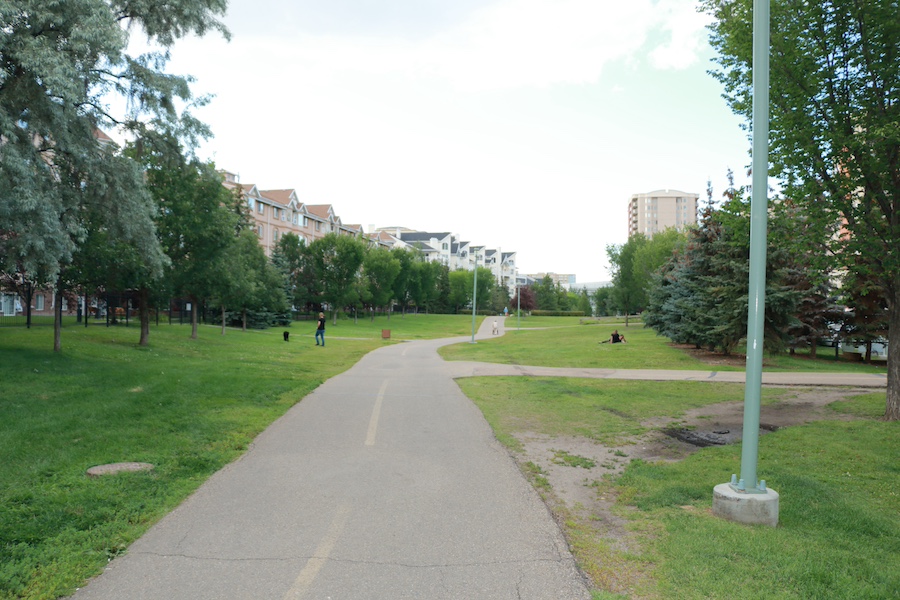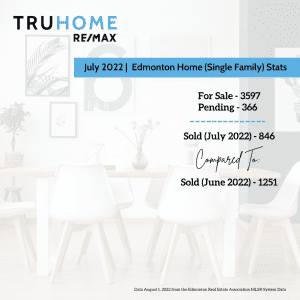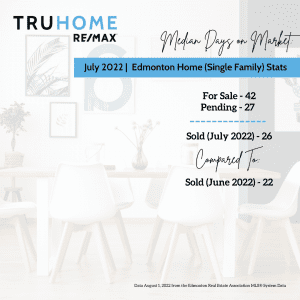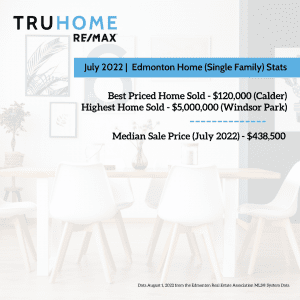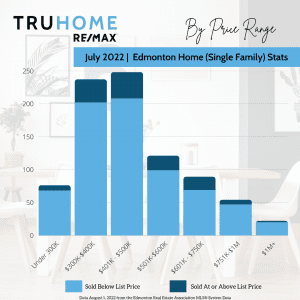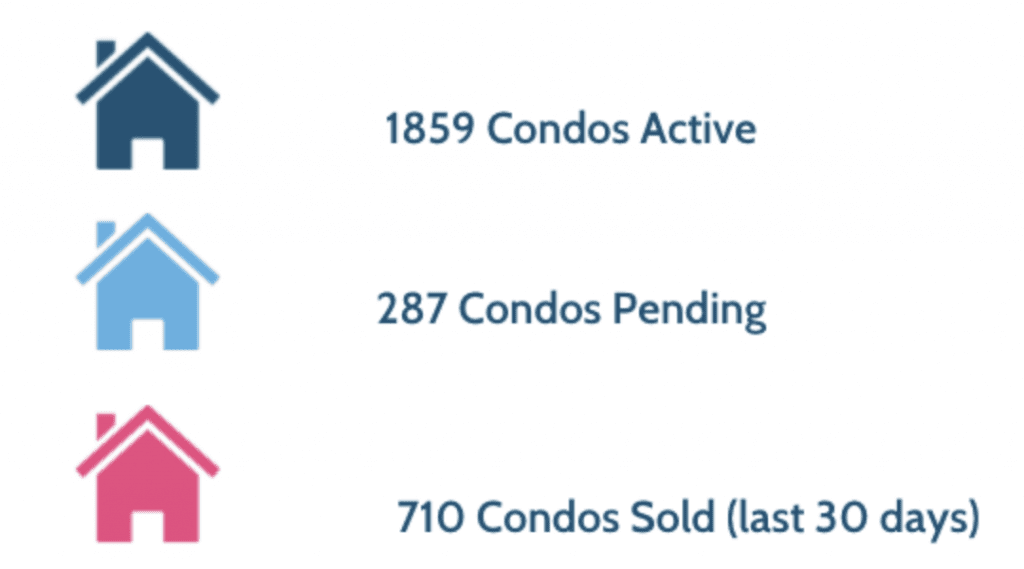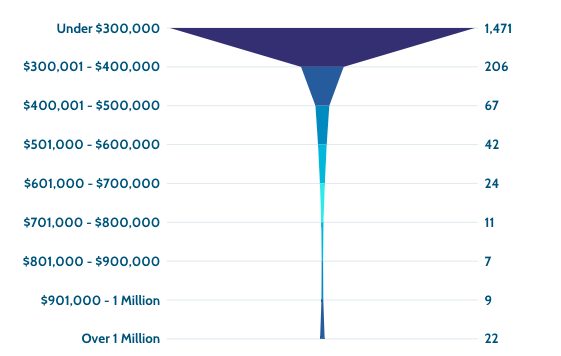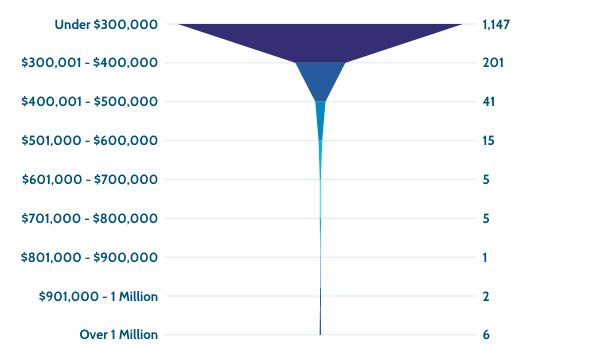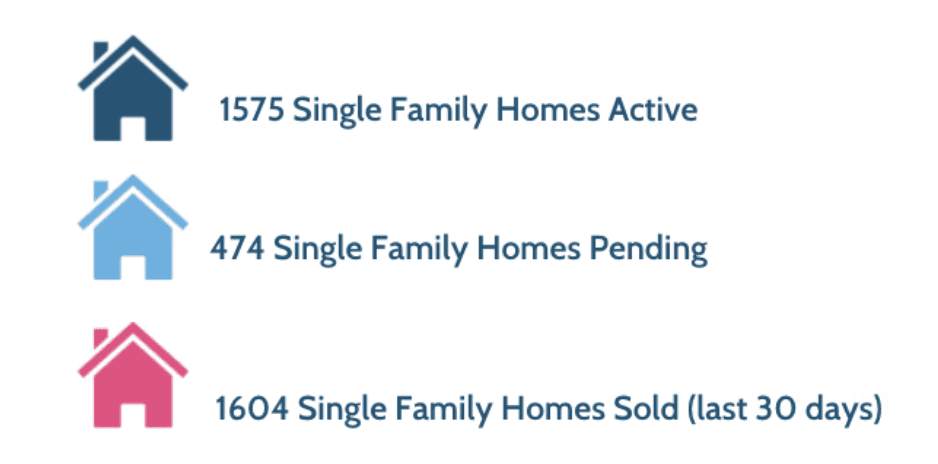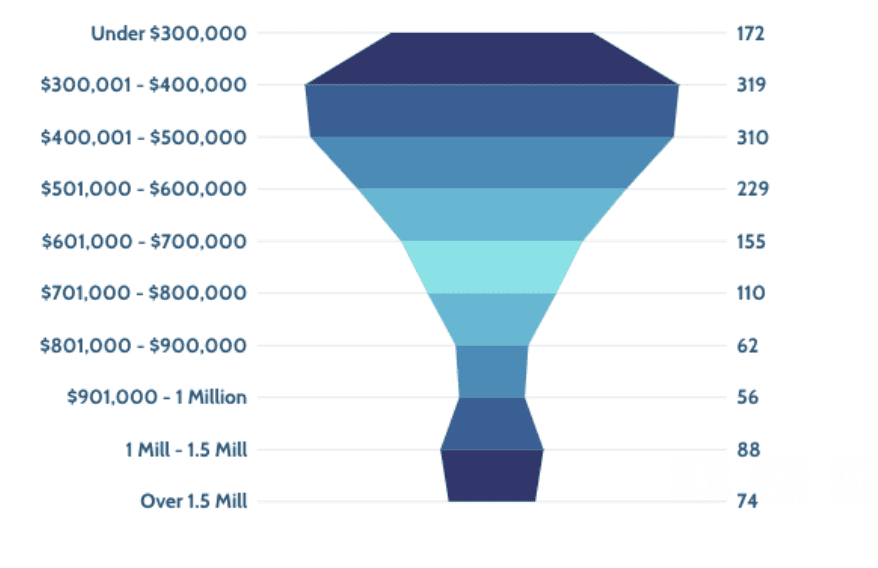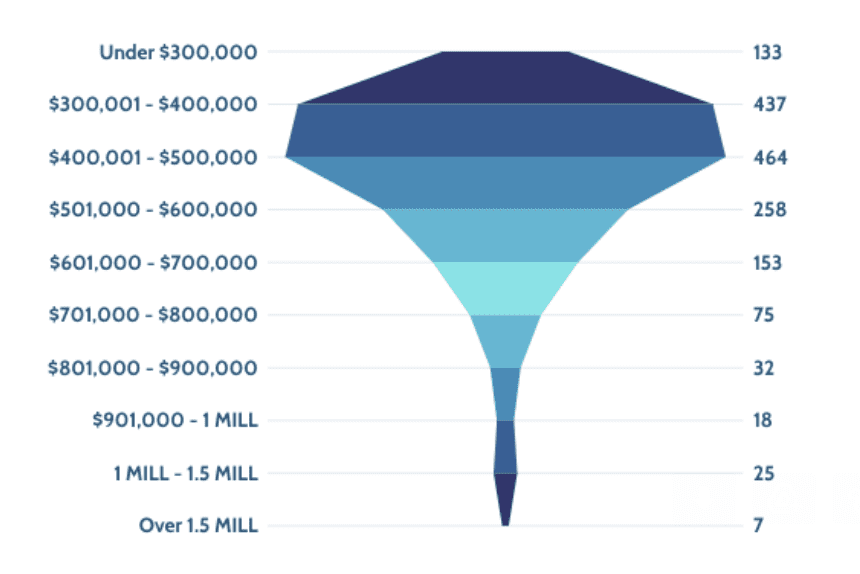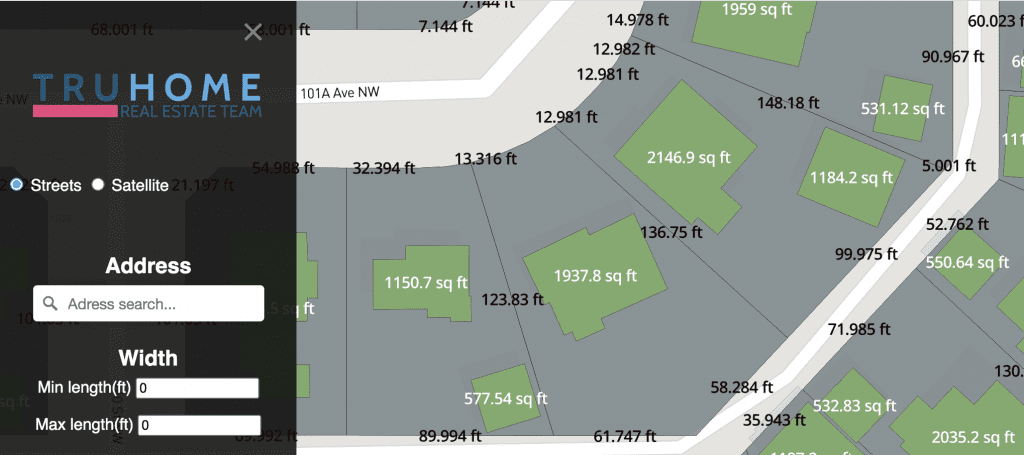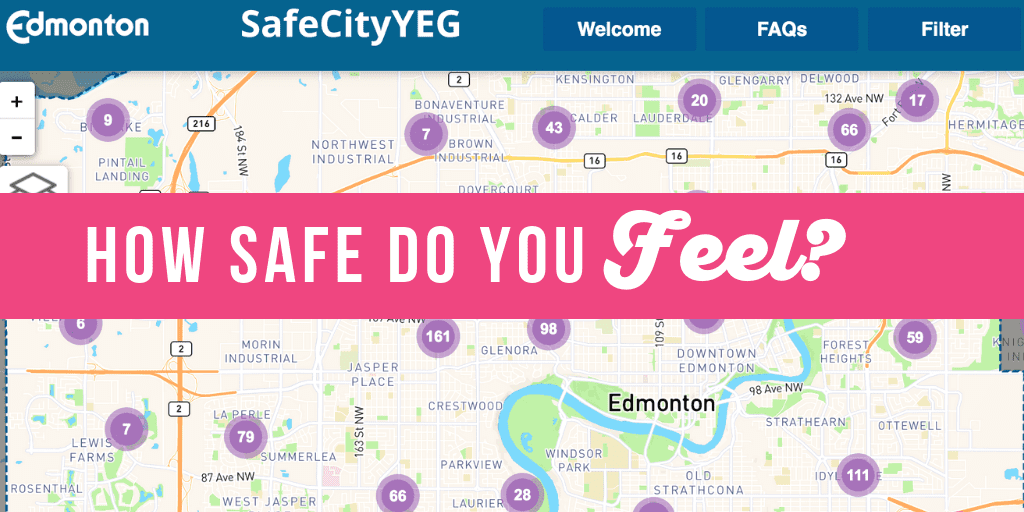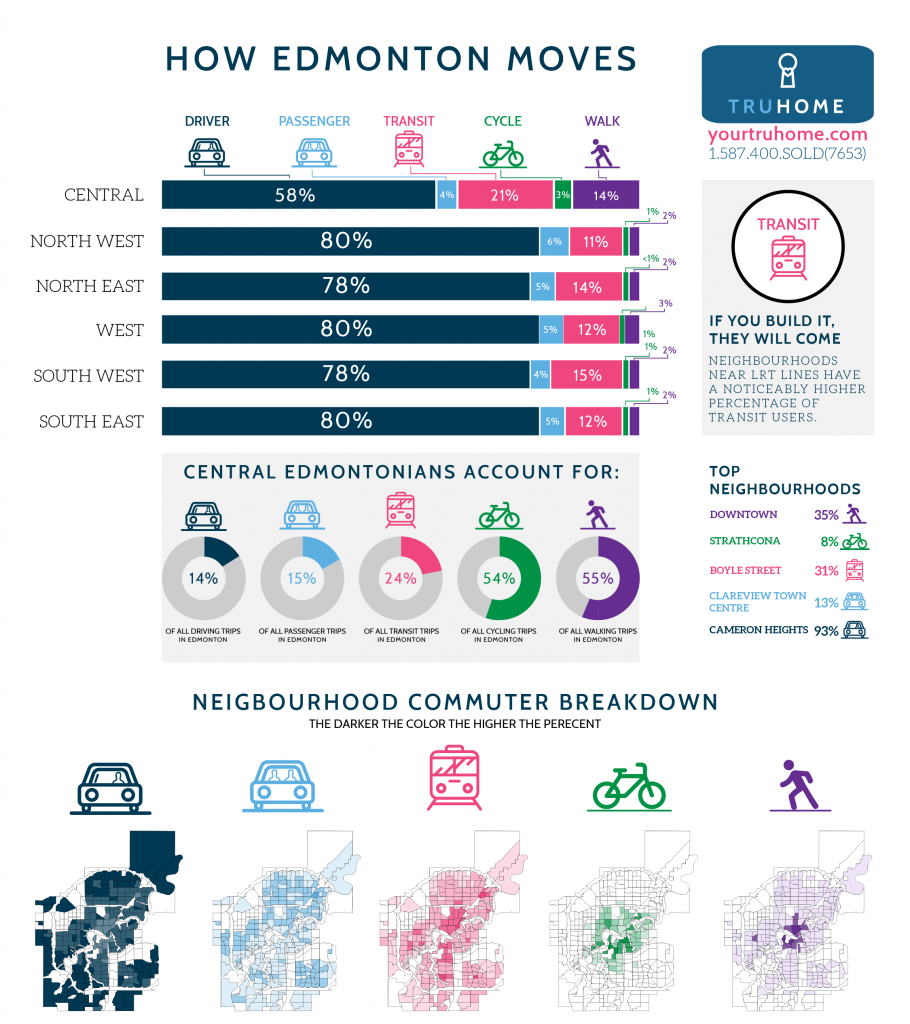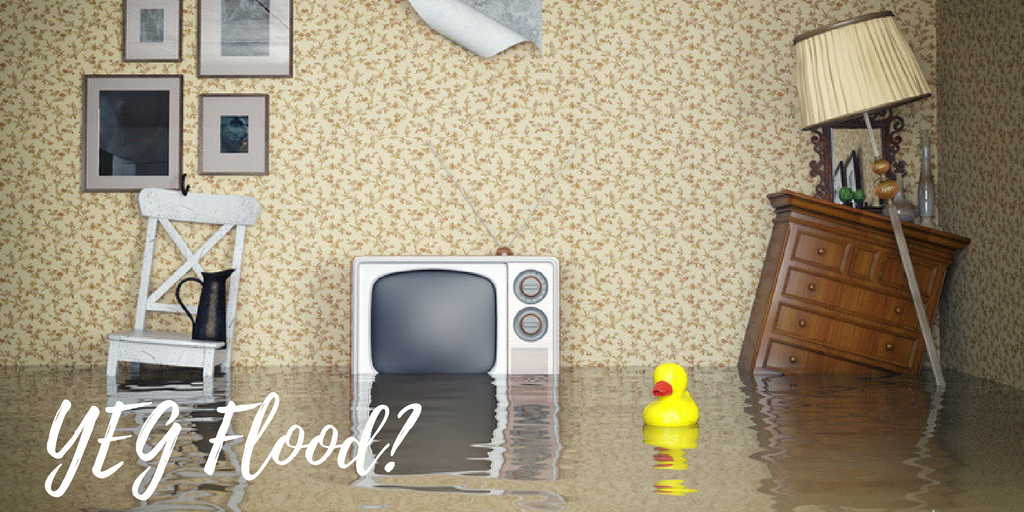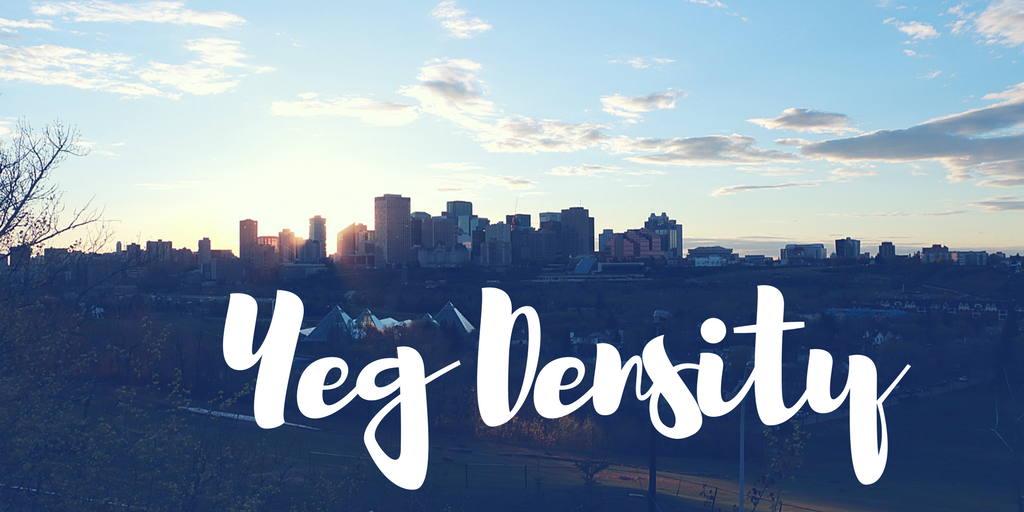
At TruHome, we are interested in the makeup of Edmonton, so that we can provide our clients with all the information they need to buy or sell their home.
Which areas of the city do you think are the most dense in Edmonton?
In order to do this, we calculated the density as the number of people living in a square kilometre (km²) in each neighbourhood. So what exactly is a square kilometre? To give you an idea of what a square kilometre is, we measured the area of a typical block in Garneau. Approximately 30 blocks would fit into 1 km². Therefore, in Garneau, about 340 people live in each block. Although city blocks do not stay consistent in size in Edmonton, this gives you a feel for what these numbers mean.
Typically, the more dense communities have apartments and other higher density living options.
Most Populated Edmonton Neighbourhoods
1) Garneau (11810 people/km²)
With a total population just shy of 10k and a smaller area of only 0.8 km², this neighbourhood is the densest in Edmonton. When one thinks Garneau, the University of Alberta is often talked about. This neighbourhood is a hot location for students, professors and those who like the eclectic energy Garneau offers. Situated along the river valley and surrounded by 109th Street and 82 Avenue, this neighbourhood is a perfect place to enjoy good cafes, great food and be inspired by the historical and modern attributes of the university.
2) Oliver (10647 people/km²)
With almost double the population of Garneau but also double the land area, Oliver is the 2nd most dense neighbourhood in Edmonton. Again with many apartments in this region, this is no surprise. Located on the northern side of the river, Oliver is 1 LRT ride away from the university. In Oliver you will find a diverse population ranging from students, to professors, to business professionals, to young families. People love Oliver for the beautiful greenery, the close walkability to the core, the amenities and quick transportation routes.
3) Boyle Street (7647 people/km²)
Boyle Street is situated to the east of downtown, Edmonton. The city of Edmonton has large aspirations for this neighbourhood and are actively developing The Quarters here as well as the new LRT line. Boyle Street offers a wide range of options when it comes to affordability of homes. While still largely apartment style, there is a mix between newer high-rises along the river to low rises. This neighbourhood is walkable to the Stadium and provides a quick commute to downtown.
4) Callingwood South (7132 people/km²)
With West Edmonton Village, one of Edmonton’s largest multi-unit complexes, this neighbourhood is the most dense area outside of the city’s core. However, it is still almost half the density of the top spot Garneau. Callingwood South is close to West Edmonton Mall and boasts an excellent farmer’s market each week during the summer/fall months.
5) Cromdale (5737 people/km²)
Cromdale is the smallest region of the top 5 densest neighbourhoods, at only 2059 km². So even though only about 2000 residents call this neighbourhood home, many live in more dense homes such as apartment buildings. Situated to the east of Boyle Street, it too offers great commutability, close to the Stadium LRT, Save-On Foods, the river valley and more.
Some other neigbhourhoods were just shy of the top 5, including Downtown (with over 12,000 Edmontonians calling it home), Strathcona and South Terwillegar (both with almost 9000 residents).
Least Populated Neighbourhoods
Excluding industrial areas as well as areas on the outskirts of the city not yet fully developed, the least dense neighbourhoods in the city in 2016 were:
1) Cloverdale (839 people/km²)
With large portions of this neighbourhood covered by park space, it makes sense that Cloverdale is the least dense area of the city. Beautiful Gallagher park, with it’s amazing views of downtown, is the setting for the prestigious Edmonton Folk Music Festival. Located just south of the river, with a mix of condos and single detached houses, this is a beautiful neighbourhood for those that want to live in the centre of the city, close to Downtown.
2) Westbrook Estates (928 people/km²)
Again most of this neighbourhood is occupied by green space, this time by The Derrick Golf and Winter Club. This private club provides family friendly year-round activities, including golf, tennis, swimming, cross country skiing, and curling. Most of the architecturally designed homes in this neighbourhood are situated on large lots backing onto either the golf course or the picturesque Whitemud Creek Ravine.
3) Rossdale (954 people/km²)
Although debatable to include in the top 5 since a large portion of the neighbourhood is taken up by the power and waste water treatment plants as well as the RE/MAX baseball field, we included it since this is a well known mixed residential area in the heart of Edmonton. Rossdale is one of Edmonton’s oldest neighbourhoods, now mostly made up of apartment buildings with a small portion of single detached homes. Some of these homes are over 50 years old!
4) Prince Rupert (1128 people/km²)
With the old municipal airport to the east, it will be interesting to see how this older neighbourhood changes as the Blatchford Area is converted to residential. The innovative Blatchford Area design is focused on sustainability and community, with about 30,000 residents expected to live there at it’s completion. Prince Rupert is an affordable option for people looking to live central right now. It is especially close to Kingsway Mall, NAIT, and the Royal Alexandra Hospital.
5) Richford (1282 people/km²)
With a population of only about 760 people and a land area of only 0.6 km², this area is again low in density because of lots of green space. Richford has Ellerslie Rugby Park plus the Blackmud Creek Ravine along its boundaries. Close to the Anthony Henday for commuting around the city, this neighbourhood has a mix of apartments and single detached homes.
What do you think of the most and least dense regions of Edmonton? Would this affect where you decide to live? If you have questions or are looking for guidance on buying or selling Edmonton Real Estate, get in touch and let’s chat.
Data Source: 2016 census data from the City of Edmonton
Disclaimer: The data included on this website is deemed to be reliable, but is not guaranteed to be accurate as we are relying on data insight from 3rd parties.
